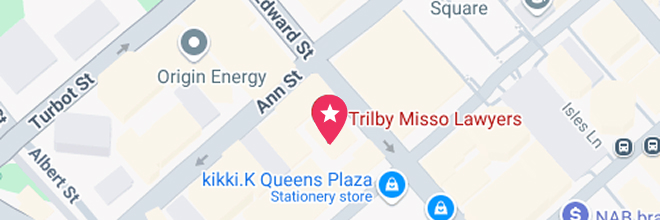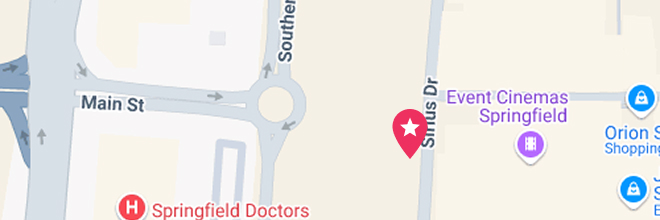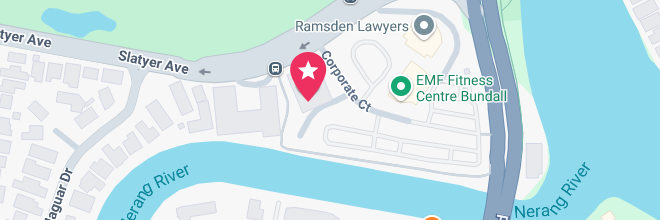Our Brisbane CBD Office
- Suite 400, Level 4/288 Edward St, Brisbane City QLD 4000
- (07) 3910 5470




Being involved in a motor vehicle accident that results in property damage can be a stressful and overwhelming experience. Whether it’s your car, a fence, or another piece of property that has been damaged, navigating the claims process can feel daunting, especially when dealing with insurance companies or uncooperative parties.
In Queensland, understanding your rights and responsibilities is crucial to ensuring a smooth resolution. Knowing what steps to take after the accident, how to gather evidence, and when to seek legal assistance can make a significant difference in the outcome of your claim.
This blog provides a practical guide for handling property damage claims resulting from motor vehicle accidents. Whether you choose to handle the claim yourself or need support for a complex case, this resource will help you understand the process, protect your interests, and work toward a fair resolution.
Property damage in a motor vehicle accident refers to harm caused to someone’s tangible property as a result of the collision. This can include damage to vehicles, fences, mailboxes, buildings, or other items impacted by the crash. In Queensland, the party at fault is typically responsible for covering the costs of repairing or replacing the damaged property.
Determining liability is key to resolving property damage claims. The driver or party at fault is legally obligated to cover the costs. This often involves their insurance provider, although disputes over fault or lack of insurance can complicate the process.
If liability is contested, you’ll need to provide evidence supporting your claim. This might include photos of the damage, witness statements, or a police report. In cases where fault cannot be easily determined, legal action may be necessary.
Understanding what constitutes property damage and the basics of liability helps lay the foundation for a successful claim.
If your property has been damaged in a motor vehicle accident, taking the right steps immediately can strengthen your claim and help you recover costs faster. Here’s what you need to do:
Collect the following details from all involved parties:
If the at-fault driver refuses to provide information, report the incident to the police.
If there are witnesses, ask for their names and contact information. Their accounts can support your claim, especially if there are disputes about fault.
Report the accident to the Queensland Police if:
Even if you plan to handle the claim independently, notifying your insurer is advisable. They can provide guidance and may assist in recovering costs if the other party is uncooperative.
If the damage compromises safety (e.g., a broken window or door), arrange temporary repairs to prevent further harm. Keep all receipts for reimbursement purposes.
By acting quickly and collecting comprehensive evidence, you’ll lay a strong foundation for your property damage claim.
If your property was damaged in a motor vehicle accident, you can file a claim independently by following these steps. Using the right approach will help you recover your losses efficiently while ensuring your claim is well-supported.
Start by collecting the necessary details about the accident:
Write a letter of demand to the at-fault driver or their insurer. This should include:
If the at-fault driver or their insurer responds, be prepared to negotiate. Mediation can be a useful tool if discussions stall. Many disputes can be resolved without the need for legal action.
If the at-fault party refuses to pay or denies liability, you may need to pursue legal action. Options include:
If your case goes to QCAT or the Magistrates Court:
If the tribunal or court orders the at-fault party to pay, and they fail to comply, you can take steps to enforce the decision, such as applying for a warrant to recover costs.
Handling a property damage claim yourself requires organisation and persistence, but with the right preparation, it’s possible to achieve a fair outcome without legal representation.
The success of a property damage claim after a motor vehicle accident hinges on the quality and completeness of the evidence you provide. Proper documentation strengthens your position and ensures your claim is processed efficiently.
Visual evidence is one of the most powerful tools for proving your claim. Make sure to capture:
Collect details from everyone involved in the accident:
Obtain at least one detailed quote for the cost of repairs or replacement of the damaged property. The quote should include:
If police attended the scene or you filed an official report, keep a copy for your records. A police report can provide an impartial account of the incident and may include fault determination.
Document all interactions with the at-fault party, their insurer, or your own insurer. This includes:
If you’ve had to pay for temporary repairs, towing, or alternative transportation, keep receipts. These expenses can often be included in your claim for reimbursement.
If fault is disputed, you may need additional evidence, such as:
If available, footage from nearby traffic cameras or security systems can provide invaluable evidence of the incident.
Having a comprehensive evidence file ensures your claim is clear and well-supported, making it easier to resolve disputes and achieve a fair outcome.
While many property damage claims can be resolved independently, there are circumstances where involving a legal professional is essential to protect your rights and achieve a fair outcome. Here are some situations where seeking legal assistance is advisable:
If the at-fault party denies responsibility or claims you are partially to blame, the claims process can become complicated. A lawyer can help gather evidence, assess the case, and advocate for you during negotiations or legal proceedings.
If the responsible party does not have insurance or refuses to pay, you may need to take legal action to recover your losses. A lawyer can guide you through filing a claim with the Queensland Civil and Administrative Tribunal (QCAT) or the Magistrates Court.
For significant damages, such as severe vehicle repairs or structural property damage, legal expertise ensures that your claim is prepared correctly. Lawyers can help maximise your chances of recovering the full amount you’re owed.
If the insurer disputes your claim or offers a settlement that doesn’t cover your costs, a lawyer can negotiate on your behalf or escalate the matter to the appropriate tribunal or court.
Filing a claim through QCAT or the Magistrates Court involves strict processes and deadlines. A lawyer can ensure your application is accurate and complete, reducing the risk of delays or rejection.
Handling a claim yourself can be time-consuming and stressful, especially if you’re dealing with other responsibilities. A lawyer takes on these burdens, allowing you to focus on other priorities.
While many property damage claims can be managed independently, seeking legal assistance can be invaluable when disputes arise or the process becomes overwhelming.
If the at-fault driver does not have insurance, you can pursue the claim directly against them. If they refuse to pay, you may need to escalate the matter to the Queensland Civil and Administrative Tribunal (QCAT) or the Magistrates Court.
Not necessarily. Many claims can be handled independently by gathering evidence, negotiating with the at-fault party or their insurer, and lodging a claim. However, legal assistance can be beneficial if fault is disputed or the claim is complex.
In Queensland, the time limit for lodging a property damage claim is typically six years from the date of the accident. Acting promptly is advised to avoid complications or evidence becoming unavailable.
For more detailed guidance on property damage claims related to motor vehicle accidents, refer to the following resources:
Dealing with property damage from a motor vehicle accident can be stressful, but knowing your rights and responsibilities can make the process much smoother. By acting promptly, gathering the necessary evidence, and following the correct steps, you can effectively manage a claim and recover the costs needed to repair or replace your property.
For straightforward claims, handling the process yourself can be efficient and cost-effective. However, if disputes arise or the claim becomes complex, seeking legal assistance ensures your interests are protected and helps secure a fair resolution.
Navigating property damage claims in Queensland doesn’t have to be overwhelming. With the right preparation and guidance, you can resolve the matter effectively and move forward with confidence.
Kathryn is Trilby Misso’s Chief Executive Officer.
Meet KathrynUse this simple online tool and find out if you have a claim in less than thirty seconds. You can choose to remain anonymous.
Your next step is a small one. All you need to do is give us a call on 07 3910 5470 or complete this form here to arrange a quick chat.
During this initial conversation, we will:

We understand that taking legal action can be stressful, and we’ll do all we can to ease your concerns.
The chat can take place at our place, your place, or by phone. There is no cost, no pressure, and no obligation.
Call 07 3910 5470 or fill out this form, and we’ll get back to you within 2 hours (during business hours). We look forward to meeting you.
enquire now